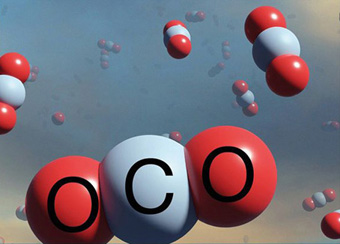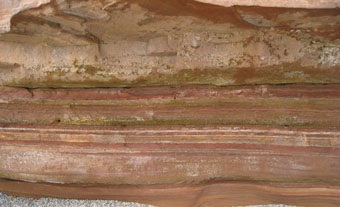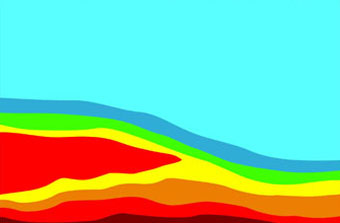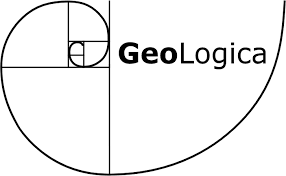Carbon Capture and Storage Masterclass

Date: 20 - 24 Jan 2025
Time: 5 days, Mon-Fri 2:00pm - 5:30pm
Type: Virtual
Tutor: Richard Worden, Professor in the Department of Earth Ocean and Ecological Sciences, University of Liverpool, UK
This course will provide participants with awareness of the geoscience needs for CCS projects; namely subsurface CO2 storage volumetrics, CO2 flow in the subsurface away from injector wells, the goal of safe and permanent storage of CO2 and cost-benefit issues linked to aquifer depth, well design, etc. The course will establish basics, such as how much CCS is needed to make a difference to global warming, and explore what types of CO2 injection are already happening, including information from CO2-enhanced oil recovery projects. The course will deal with CO2 as a fluid phase and how much CO2 can be stored per cubic meter in terms of porosity and over entire aquifers. It will deal with how quickly CO2 can be injected and the role of aquifer permeability. The course then moves on to the all-important geomechanical effects of CO2 injection and feedbacks between induced mineral dissolution and rock strength and other rock properties. The full range of possible interaction between CO2 and both aquifer and top-seal will be covered, as will the range of possible leakage mechanisms that need to be assessed. The course will conclude with consideration of monitoring strategies.
You will learn to:
- Develop awareness of the role of geoscience in CCS and of CCS in CO2 emissions reductions.
- Appreciate what CO2 injection projects have occurred so far and how they differ from industrial CCS.
- Understand CO2 as a fluid in the subsurface and the fluid injection pressure and effective stress regimes that CO2 injection will involve.
- Build awareness of the volumetrics of CO2 storage from the micro (pore-scale) to the macro (aquifer volumes).
- Gain an appreciation of the question of CO2 flow away from injector wells controlled by permeability and aquifer architecture.
- Understand the range of effects that CO2 can have on the host aquifer, from geomechanical to geochemical.
- Assess the role of top-seal and fault-seal properties and how they will influence CO2 storage, from risk of fracking, or induced seismicity, to mineral dissolution.
- Understand the range of ways that CO2 could escape from the planned storage sites.
- Develop an awareness of the range of monitoring strategies that could be employed to ensure safe and long-term storage of CO2.
Seals, Containment and Risk for CCS and Hydrogen Storage

Date: 10 - 14 Feb 2025
Time: 5 days, Mon-Fri 2:00pm - 5:30pm
Type: Virtual
Tutor: Richard Swarbrick: Manager, Swarbrick GeoPressure
This course examines the nature and properties of seals as they relate to containment for permanent storage of CO2 and cyclical storage of hydrogen and/or compressed air. The course will provide a grounding in the geomechanics of seals and how seals and their properties are created in the subsurface. While most data and analysis relating to seals has been acquired from and applied to the containment of oil and gas, this course will show how such data can be applied to CCS and gas storage. Particular attention will be given to the different sealing requirements of CO2 and hydrogen relative to oil/gas and water.
You will learn to:
- Evaluate the nature of containment seals and their properties in the deep earth (>1km/0.62 miles below surface).
- Apply knowledge of seal integrity to estimates of column heights and associated storage volumes.
- Assess the concepts of seal integrity and how to predict risk of seal breach/failure.
- Appraise current knowledge of seal behaviour using case studies.
- Manage the requirements for permanent CO2 storage using CCS versus short-term/cyclic storage for hydrogen air.
- Characterize data requirements and limitations to assess seal integrity and risk (data sourced mainly from oil/gas boreholes).
- Evaluate different trapping requirements for gas storage (currently data-poor) relative to oil/gas (historically data-rich).
- How geochemical fluid-rock reactivity may impact seals to gas storage over time.
Understanding Seismic Data: Time, Depth and Geology

Date: 24 - 27 Mar 2025
Time: 5 days, Mon-Fri 2:00pm - 5:30pm
Type: Virtual
Tutors: David Kessler: President of SeismicCity, Ron Kerr: Independent seismic processing QC consultant and John Byrd: President and Principal Geoscientist, ByrdGEO
This course is designed to provide seismic interpreters, managers, geophysicists and geologists with a broad understanding of seismic imaging and processing. Emphasis will be placed on an understanding of industrial methods and workflows, differentiation of signal from artifacts, and connecting seismic data to geological settings for prospect evaluation and generation. The limited amount of quantitative seismic theory that is included is linked to the fundamentals of seismic data acquisition and processing, imaging, model building and interpretation through the incorporation of case studies. The eight course sessions continually build on the material from previous sessions and are tied to the underlying geology.
You will learn to:
- Outline the principal strengths and limitations of depth imaging.
- Assess the uncertainties of depth imaging and strategies to reduce these.
- Establish the fundamentals of marine- and land-based seismic from acquisition to pre-processing.
- Examine the processing steps leading to post- and pre-stack time migration, and post-stack depth migration.
- Evaluate various migration parameters used in the application of pre-stack depth migration and how they affect the PSDM image.
- Gauge the accuracy of time to depth conversion by application of pre-stack depth migration, as well as seismic to well tie and residual depth correction.
- Demonstrate the fundamental differences between depth and time migration and the improved imaging results when depth migration is utilized to resolve lateral velocity variations.
- Evaluate the link between the pre-stack depth image and the underlying geological settings.
- Analyze the complex structural geometries associated with salt tectonics and their significant associated imaging challenges.
- Differentiate signal from artifacts.
- Assess the construction of geological models utilizing our common understanding of velocity estimation, anisotropic parameters and different geologic settings.
- Connect seismic data to geological settings for prospect evaluation and generation.
KeyFacts Energy Industry Directory: GeoLogica l KeyFacts Energy news: Training
 KEYFACT Energy
KEYFACT Energy
